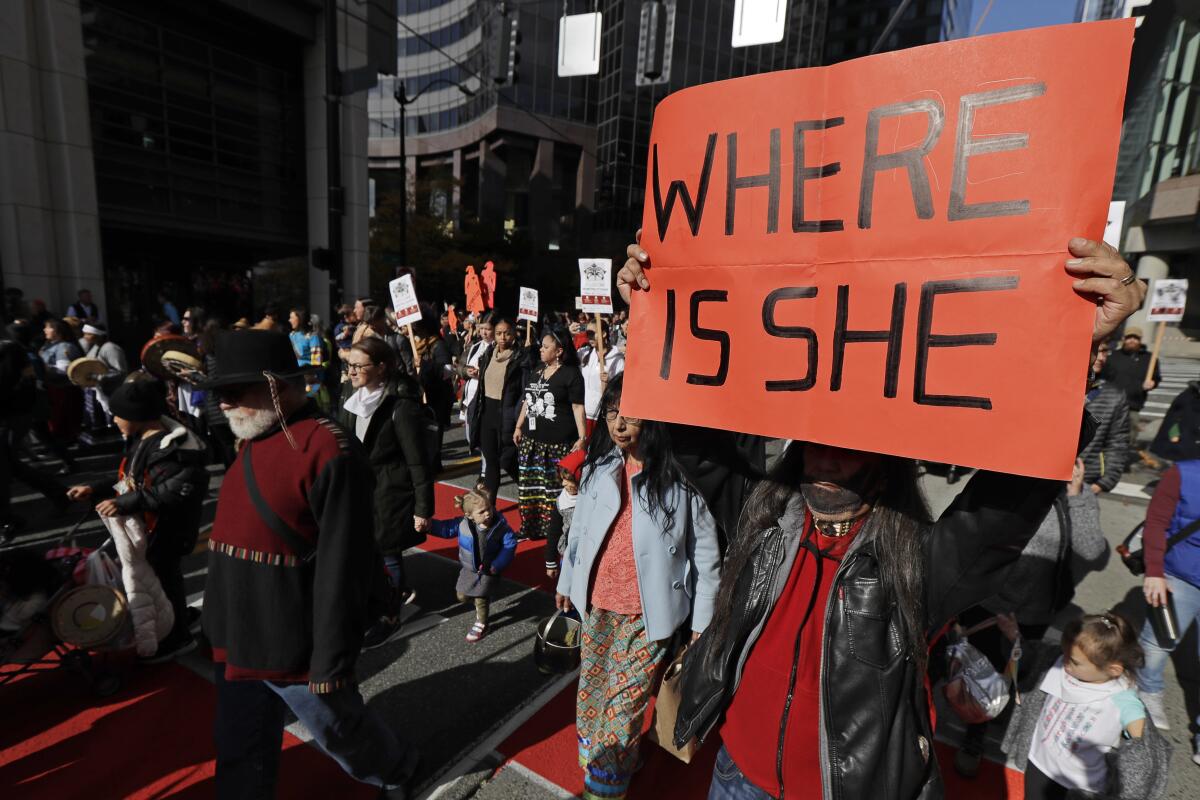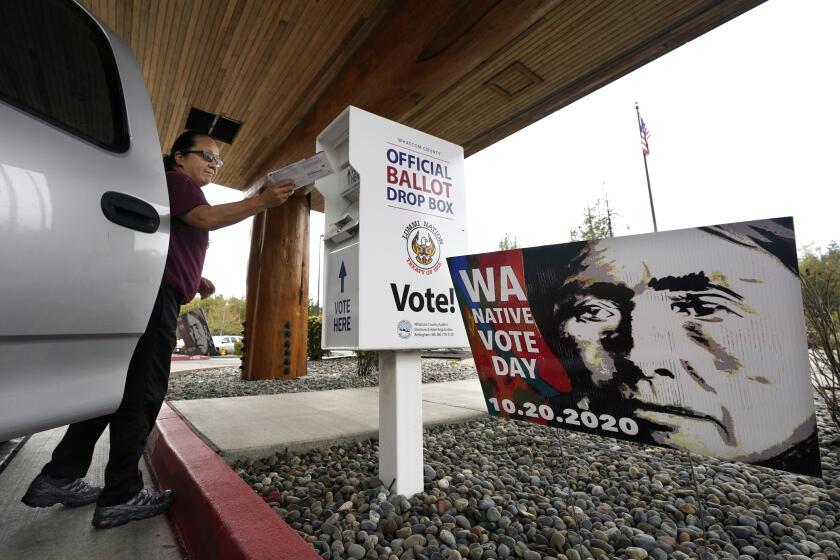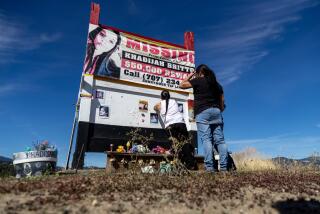Washington OKs first statewide alert system for missing Indigenous people

- Share via
Washington Gov. Jay Inslee on Thursday signed into law a bill that creates a first-in-the-nation statewide alert system for missing Indigenous people.
The law creates a system similar to Amber Alerts and so-called silver alerts, which are used respectively for missing children and vulnerable adults in many states.
The system will notify law enforcement when there’s a report of a missing Indigenous person. It will also place messages on highway reader boards and on the radio and social media, and will provide information to the news media.
The law attempts to address a crisis of missing Indigenous people — particularly women — in Washington and across the United States. While it includes missing men, women and children, a summary of public testimony on the legislation notes that “the crisis began as a women’s issue, and it remains primarily a women’s issue.”
A 2021 report by a government watchdog found the true number of missing and murdered Indigenous women in the U.S. is unknown due to reporting problems, distrust of law enforcement and jurisdictional conflicts. But Native American women face murder rates almost three times those of white women overall — and up to 10 times the national average in certain locations, according to a 2021 summary of research by the National Congress of American Indians. More than 80% have experienced violence.
In Washington, more than four times as many Indigenous women go missing than white women, according to research conducted by the Urban Indian Health Institute in Seattle, but many such cases receive little or no media attention.
An alert system will help mitigate some problems surrounding investigations of missing Indigenous people by allowing better communication between tribal, local and state law enforcement and creating a way for law enforcement to flag such cases for other agencies. The law also expands the definition of “missing endangered person” to include Indigenous people, as well as children and vulnerable adults with disabilities or memory or cognitive issues.
The measure is the latest step the state has taken to address the issue. The Washington State Missing and Murdered Indigenous Women and People Task Force is working to coordinate a statewide response and had its first meeting in December. Its first report is expected in August.
Many states from Arizona to Oregon to Wisconsin have taken recent action to address the crisis of murdered and missing Indigenous women. Efforts include funding for better resources for tribal police to the creation of new databases specifically targeting missing tribal members. Tribal police agencies that use Amber Alerts for missing Indigenous children include the Hopi and Las Vegas Paiute.
The White House says local, state and federal officials must do more to ensure Native Americans have equal access to voting.
In California, the Yurok Tribe and the Sovereign Bodies Institute, an Indigenous-run research and advocacy group, uncovered 18 cases of missing or slain Native American women in roughly the past year in their recent work — a number they consider a vast undercount. An estimated 62% of those cases are not listed in state or federal databases for missing persons.
More to Read
Sign up for Essential California
The most important California stories and recommendations in your inbox every morning.
You may occasionally receive promotional content from the Los Angeles Times.











